Support Village Voice News With a Donation of Your Choice.
Although Columbus sighted the Guyanese coast in 1498, during his third voyage to the Americas, the Dutch were the first Europeans to settle what is now Guyana. The Netherlands had obtained independence from Spain in the late 1500s and by the early 1600s had emerged as a major commercial power, trading with the fledgling English and French colonies in the Lesser Antilles. In 1616 the Dutch established the first European settlement in the area of Guyana, a trading post twenty-five kilometers upstream from the mouth of the Essequibo River. Other settlements followed, usually a few kilometers inland on the larger rivers.
The initial purpose of the Dutch settlements was trade with the indigenous people. The Dutch aim soon changed to acquisition of territory as other European powers gained colonies elsewhere in the Caribbean. Although Guyana was claimed by the Spanish, who sent periodic patrols through the region, the Dutch gained control over the region early in the seventeenth century. Dutch sovereignty was officially recognized with the signing of the Treaty of Munster in 1648.
In 1621 the government of the Netherlands gave the newly formed Dutch West India Company complete control over the trading post on the Essequibo. This Dutch commercial concern administered the colony, known as Essequibo, for more than 170 years. The company established a second colony, on the Berbice River southeast of Essequibo, in 1627. Although under the general jurisdiction of this private group, the settlement, named Berbice, was governed separately. Demerara, situated between Essequibo and Berbice, was settled in 1741 and emerged in 1773 as a separate colony under direct control of the Dutch West India Company.
Although the Dutch colonizers initially were motivated by the prospect of trade in the Caribbean, their possessions became significant producers of crops. The growing importance of agriculture was indicated by the export of 15,000 kilograms of tobacco from Essequibo in 1623. But as the agricultural productivity of the Dutch colonies increased, a labor shortage emerged. The indigenous populations were poorly adapted for work on plantations, and many people died from diseases introduced by the Europeans. The Dutch West India Company turned to the importation of African slaves, who rapidly became a key element in the colonial economy. By the 1660s, the slave population numbered about 2,500; the number of indigenous people was estimated at 50,000, most of whom had retreated into the vast hinterland.
Although African slaves were considered an essential element of the colonial economy, their working conditions were brutal. The mortality rate was high, and the dismal conditions led to more than half a dozen slave rebellions.
The most famous slave uprising began in February 1763. On two plantations on the Canje River in Berbice, slaves rebelled, taking control of the region. As plantation after plantation fell to the slaves, the European population fled; eventually only half of the whites who had lived in the colony remained. Led by Cuffy (now the national hero of Guyana), the rebels came to number about 3,000 and threatened European control over the Guianas. The insurgents were defeated with the assistance of troops from neighboring French and British colonies and from Europe.
One of the most significant Dutch legacies in Guyana was the method of land management. Settlement and agriculture initially were limited to a belt of land extending 50 to 150 kilometers upriver. The marshy coast flooded at high tide and did not appear conducive to European settlement. The prospect of large profits for tropical agricultural products, especially sugar, led to the reclamation of coastal lands in the second half of the 1700s. The Dutch were eminently suited to this task, having originated the polder system, a technique by which a tract of usable land is created by damming and then draining a water-covered area. Using this system, the Dutch created a coastal plain that remains one of Guyana’s most productive plantation areas.
The polder system entailed the use of a front dam, or facade, along the shorefront. This dam was supported by a back dam of the same length and two connecting side dams, which formed a rectangular tract of land known as a polder. The dams kept the salt water out, and fresh water was managed by a network of canals that provided drainage, irrigation, and a system of transportation. The labour for the “polderization” of Guyana’s coast was provided by the Dutch colony’s African slaves. (countrystudies.us/Guyana)

















